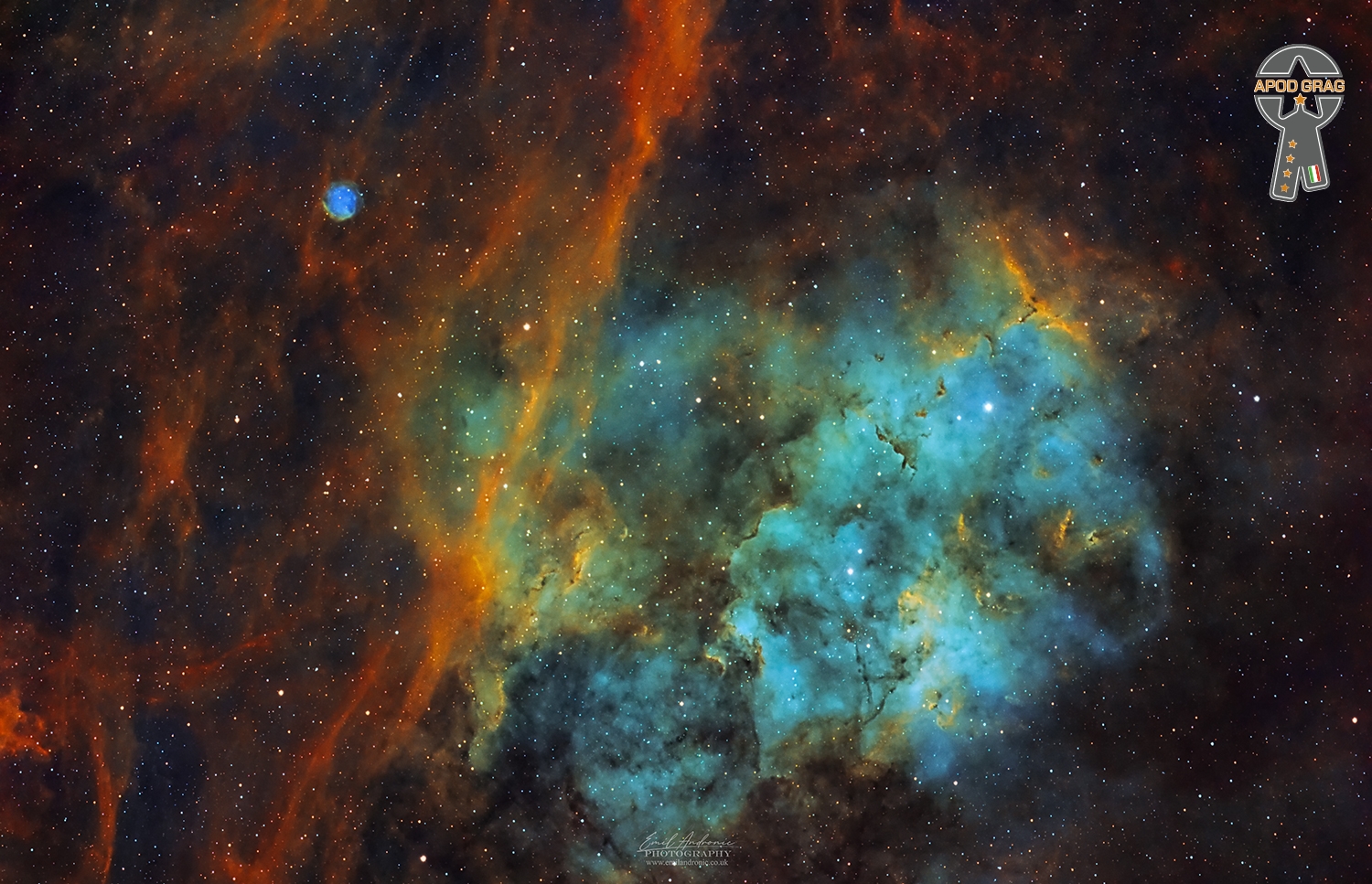The Cosmos with Sh2-115/116
Sharpless 115 stands just north-west of Deneb, the alpha star of Cygnus, the Swan in planet Earth’s skies. Noted in the 1959 catalog by astronomer Stewart Sharpless (as Sh2-115) the faint but lovely emission nebula lies along the edge of one of the outer Milky Way’s giant molecular clouds, about 7,500 light-years away. Shining with the light of ionized atoms of hydrogen, sulfur, and oxygen in this Hubble palette color composite image, the nebular glow is powered by hot stars in star cluster Berkeley 90. The cluster stars are likely only 100 million years old or so and are still embedded in Sharpless 115. But the stars’ strong winds and radiation have cleared away much of their dusty, natal cloud. At the emission nebula’s estimated distance, this cosmic close-up spans just under 100 light-years.
SH2-116 is a small nebula that is also known as Abell 71 This object was first classified as a planetary nebula but recent studies show it to be an HII region instead. The nebula surrounding SH2-116 is indeed part of SH2-115. The nebula does not respond well with normal RGB filters but you can use a red filter as a luminance if you do not have a H-Alpha filter. Using the hydrogen-alpha filter, you can easily pick up this object without exposing a very long time using a fast system.
